Photo
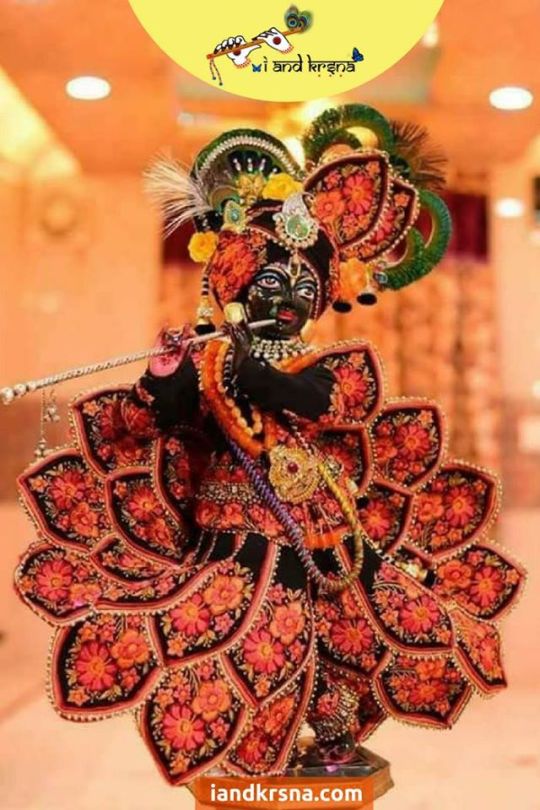
#Krishna is the source of everything; He is not just a Hindu God. He is the origin of all.
#iandkrsna
2 notes
·
View notes
Link
False ego is said to be the real cause of sorrow. It gives rise to the bondage of material desires — the desire for body attachment, name, fame, selfishness, greed, and so on. It creates divisions within, duality, confusion, thought disturbance, separation, limitations, doubts, and fears of all sorts including the fear of death. It is the condition "I" or "I am the body" idea which hides reality and functions at all moments of the waking and dreaming states of our consciousness.
0 notes
Link
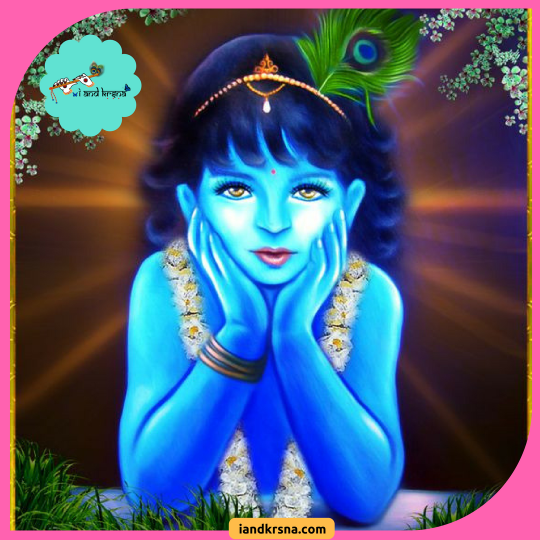
0 notes
Text
What is the meaning of Hare Kṛṣṇa mantra, how does chanting Hare Kṛṣṇa mantra helps anyone?
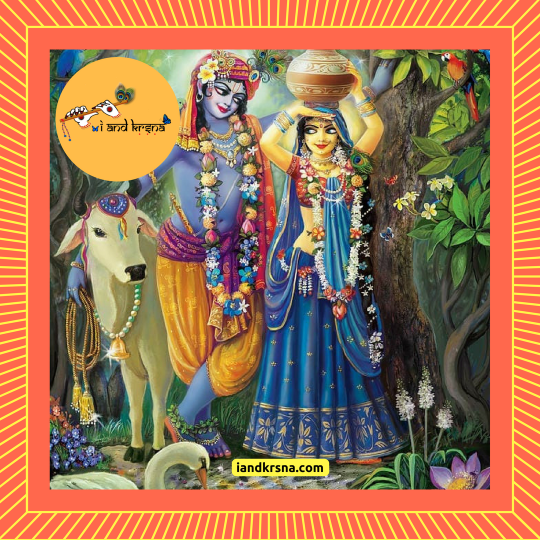
First principle in devotional service is to chant the Hare Kṛṣṇa maha-mantra (maha means “great”; mantra means “sound that liberates the mind from ignorance”).
Kṛṣṇa or Christ- the name is the same. The main point is to follow the injunctions of the Vedic scriptures that recommend chanting the name of God in this age. The easiest way is to chant the maha-mantra: Hare Kṛṣṇa, Hare Kṛṣṇa, Kṛṣṇa Kṛṣṇa, Hare Hare/ Hare Rama, Hare Rama, Rama Rama, Hare Hare.
Rama [O Supreme Enjoyer] and Kṛṣṇa [O all-attractive Lord] are names of God, and Hare [is the energy of God]. So when we chant the maha-mantra, we address God together with His energy. Chanting is a prayer to Kṛṣṇa, so in the beginning of the Hare Kṛṣṇa maha-mantra we first address the internal energy of Kṛṣṇa, [Hare] that means “O Radharani! O Hare! O energy of the Lord!” When we address someone in this way, he usually says, “Yes, what do you want?” The answer is, “Please engage me in Your service”.
Just as there are males and females in the material world, similarly, God is the original male (purusa), and His energy (prakrti) is the original female. This energy is of two kinds, the spiritual and the material. At present we are in the clutches of the material energy. Therefore we pray to Kṛṣṇa that He may kindly deliver us from the service of the material energy and accept us into the service of the spiritual energy.
In the Narada-pancaratra it is stated that all the Vedic rituals, mantras, and understanding are compressed into the eight words Hare Kṛṣṇa, Hare Kṛṣṇa, Kṛṣṇa Kṛṣṇa, Hare Hare. Similarly, in the Kali-santarana Upanishad it is stated that these sixteen words, Hare Kṛṣṇa, Hare Kṛṣṇa, Kṛṣṇa Kṛṣṇa, Hare Hare/ Hare Rama, Hare Rama, Rama Rama, Hare Hare, are especially meant for counteracting the degrading and contaminating influence of this materialistic age of Kali.
This chanting is exactly like the genuine cry of a child for its mother’s presence. Mother Hara helps the devotee achieve the Lord Father’s grace, and the Lord reveals Himself to the devotee who chants this mantra sincerely.
God has kindly made it very easy for us to chant His names, and He has also invested all His powers in them. Therefore the names of God and God Himself are identical. This means that when we chant the holy names we are directly associating with God and being purified. Therefore, we should always try to chant with devotion and reverence. The more attentively and sincerely you chant these names of God, the more spiritual progress you will make.
Source: A.C. Bhaktivedanta Swami Prabhupada (2014 edition), “The Science of Self-Realization”, Page 17, 109, 129 and 170.
A.C. Bhaktivedanta Swami Prabhupada (2012 edition), “Message of Godhead”, Last Page.
0 notes
Text
Difference between a mayawadi and a pure devotee

There are many so-called devotees who think that in the conditioned state we may worship the Personality of Godhead but that ultimately there is no personality; they say that since the Absolute Truth is impersonal, one can imagine a personal form of the impersonal Absolute Truth for the time being, but as soon as one becomes liberated the worship stops. That is the theory put forward by the Mayavada philosophy. Actually the impersonalists do not merge into the existence of the Supreme Person but into His personal bodily luster, which is called the brahmajyoti. Although that brahmajyoti is not different from His personal body, that sort of oneness (merging into the bodily luster of the Personality of Godhead) is not accepted by a pure devotee because the devotees engage in greater pleasure than the so-called pleasure of merging into His existence. The greatest pleasure is to serve the Lord. Devotees are always thinking about how to serve Him; they are always designing ways and means to serve the Supreme Lord, even in the midst of the greatest obstacles of material existence.
The Mayavadis accept the description of the pastimes of the Lord as stories, but actually they are not stories; they are historical facts. Pure devotees accept the narrations of the pastimes of the Lord not as stories but as Absolute Truth. The words mama paurusani are significant. Devotees are very much attached to glorifying the activities of the Lord, whereas the Mayavadis cannot even think of these activities. According to them the Absolute Truth is impersonal. Without personal existence, how can there be activity? The impersonalists take the activities mentioned in the Srimad-Bhagavatam, Bhagavadgita and other Vedic literatures as fictitious stories, and therefore they interpret them most mischievously. They have no idea of the Personality of Godhead. They unnecessarily poke their noses into the scripture and interpret it in a deceptive way in order to mislead the innocent public. The activities of Mayavada philosophy are very dangerous to the public, and therefore Lord Caitanya warned us never to hear from any Mayavadi about any scripture. They will spoil the entire process, and the person hearing them will never be able to come to the path of devotional service to attain the highest perfection, or will be able to do so only after a very long time.
It is clearly stated by Kapila Muni that bhakti activities, or activities in devotional service, are transcendental to mukti. This is called pancama-purusartha. Generally, people engage in the activities of religion, economic development and sense gratification, and ultimately they work with an idea that they are going to become one with the Supreme Lord (mukti). But bhakti is transcendental to all these activities. The Srimad-Bhagavatam, therefore, begins by stating that all kinds of pretentious religiosity is completely eradicated from the Bhagavatam. Ritualistic activities for economic development and sense gratification and, after frustration in sense gratification, the desire to become one with the Supreme Lord, are all completely rejected in the Bhagavatam. The Bhagavatam is especially meant for the pure devotees, who always engage in Kṛṣṇa consciousness, in the activities of the Lord, and always glorify these transcendental activities. Pure devotees worship the transcendental activities of the Lord in Vrndavana, Dvaraka and Mathura as they are narrated in the Srimad-Bhagavatam and other puranas. The Mayavadi philosophers completely reject them as stories, but actually they are great and worshipable subject matters and thus are relishable only for devotees. That is the difference between a Mayavadi and a pure devotee.
Source: A.C. Bhaktivedanta Swami Prabhupada (2014 edition), “Srimad Bhagavatam”, Third Canto, Chapter 25 – Text 34
0 notes
Text
Mind is a product of egoism in goodness and intelligence is a product of egoism in passion
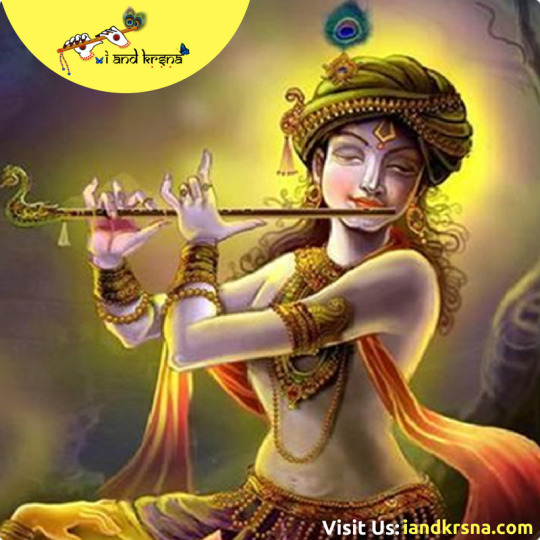
The mind is the product of ego in goodness and the function of the mind is acceptance and rejection according to desire. But here intelligence is said to be the product of ego in passion. That is the distinction between mind and intelligence; a mind is a product of egoism in goodness, and intelligence is a product of egoism in passion. The desire to accept something and reject something is a very important factor of the mind. Since mind is a product of the mode of goodness, if it is fixed upon the Lord of the mind, Aniruddha, then the mind can be changed to Kṛṣṇa consciousness. It is stated by Narottama Dasa Thakura that we always have desires. Desire cannot be stopped. But if we transfer our desires to please the Supreme Personality of Godhead, that is the perfection of life. As soon as the desire is transferred to lording it over material nature, it becomes contaminated by matter. Desire has to be purified. In the beginning, this purification process has to be carried out by the order of the spiritual master, since the spiritual master knows how the disciple’s desires can be transformed into Kṛṣṇa consciousness. As far as intelligence is concerned, it is clearly stated here that it is a product of egoism in passion. By practice one comes to the point of the mode of goodness, and by surrendering or fixing the mind upon the Supreme Personality of Godhead, one becomes a very great personality or Mahatma. In Bhagavad-gita it is clearly said, a mahatma sudurlabhah: “Such a great soul is very rare.”
In this verse, it is clear that both kinds of senses, the senses for acquiring knowledge and the senses for action are products of egoism in the mode of passion. And because the sense organs for activity and for acquiring knowledge require energy, the vital energy, or life energy, is also produced by egoism in the mode of passion. We can actually see, therefore, that those who are very passionate can improve in material acquisition very quickly. It is recommended in the Vedic scriptures that if one wants to encourage a person in acquiring material possessions, one should also encourage him in sex life. We naturally find that those who are addicted to sex life are also materially advanced because sex life or passionate life is the impetus for the material advancement of civilization. For those who want to make spiritual advancement, there is almost no existence of the mode of passion. Only the mode of goodness is prominent. We find that those who engage in Kṛṣṇa consciousness are materially poor, but one who has eyes can see who is the greater. Although he appears to be materially poor, a person in Kṛṣṇa consciousness is not actually a poor man, but the person who has no taste tor Kṛṣṇa consciousness and appears to be very happy with material possessions is actually poor. Persons infatuated by material consciousness are very intelligent in discovering things for material comforts, but they have no access to understanding the spirit soul and spiritual life. Therefore, if anyone wants to advance in spiritual life, he has to come back to the platform of purified desire, the purified desire for devotional service. As stated.
1 note
·
View note
Photo
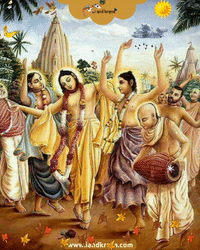
#Krishna never forgets. We very clearly can see how #Krsna has never forgotten us. Visit us: http://bit.ly/2yq3Wjj
1 note
·
View note
Photo

(via GIPHY)
0 notes
Photo

(via GIPHY)
0 notes
Text
What is the difference between lords incarnation and lords expansion?
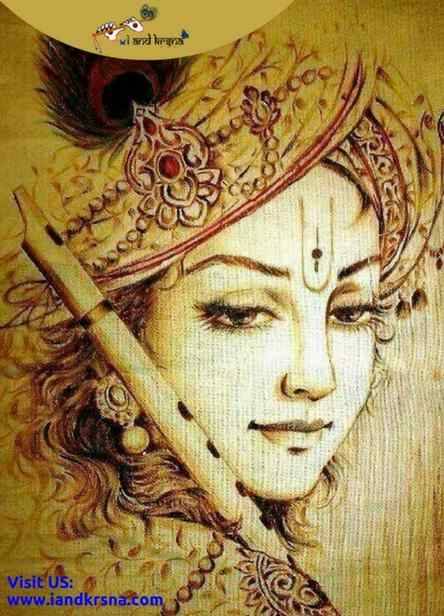
“Lord Krishna is the original Absolute Personality, the Godhead, and all the other Viṣṇu forms – with four hands, decorated with conch, lotus, club, and wheel – are plenary expansions of Krishna. These twenty-four forms are known as the vilasa manifestation of the prabhava (four-handed) form, and they are named differently according to the position of the symbolic representations (conch, lotus, club, and wheel).
The expansions of Lord Kṛṣṇa who come to the material creation are called avatars, or incarnations. The word avatar means “One who descends”, and in this case the word specifically refers to one who descends from the spiritual sky. In the spiritual sky there are innumerable Vaikuntha planets, and from these planets the expansions of the Supreme Personality of Godhead come into this universe.
There are six kinds of incarnations 1) the purusha-avatar, 2) the lila-avatara, 3) the guna-avatara, 4) the manvantara-avatara, 5) the yuga-avatara, and 6) the saktyavesa-avatara.
Kṛṣṇa first incarnates as the three purusa-avataras, namely the Maha-Viṣṇu or Karanodaksayi avatara, the Garbhodakasayi avatara and the Ksirodakasayi avatara.

Kṛṣṇa’s lila-avataras include 1) Kumaras, 2) Narada, 3) Varaha, 4) Matsya, 5) Yajna, 6) Nara-narayana, 7) Kardami Kapila, 8) Dattatreya, 9) Hayasirsa, 10) Hamsa, 11) Dhruvapriya or Prsnigarbha, 12) Rsabha, 13) Prthu, 14) Nrsimha, 15) Kurma, 16) Dhanvantari, 17) Mohini, 18) Vamana, 19) Bhargava (Parasurama), 20) Raghavendra, 21) Vyasa, 22) Pralambari Balarama, 23) Kṛṣṇa, 24) Buddha, 25) Kalki. These 25 lila-avataras appear in one day of Brahma, which is called a Kalpa (Refer to cosmic manifestation section for details on day of Brahma). Therefore, these lila-avataras are sometimes called Kalpa-avataras. Out of these, the incarnation of Hamsa and Mohini are not permanent, but Kapila, Dattatreya, Rsabha, Dhanvantari and Vyasa are five eternal forms, and they are more celebrated. The incarnations of the tortoise Kurma, the fish Matsya, Nara-narayana, Varaha, Hayasirsa, Prsnigarbha, and Balarama are considered to be incarnations of vaibhava (two handed) form.
Kṛṣṇa’s manvantara-avataras include 1) Yajna, 2) Vibhu 3) Satyasena, 3) Hari 5) Vaikuntha, 6) Ajita, 7) Vamana, 8) Sarvabhauma, 9) Rsabha, 10) Visvaksena, 11) Dharmasetu, 12) Sudhama, 13) Yogesvara, 14) Brhadbhanu. Out of these fourteen manvantara-avataras, Yajna and Vamana are also lila-avataras. These fourteen manvantara-avataras are also known as vaibhava-avataras. There is no possibility of counting the manvantara-avataras. In one kalpa, or one day of Brahma, fourteen Manus are manifested. One day of Brahma is calculated at 4 billion 320 million years, and Brahma lives for one hundred years on this scale. Thus if fourteen Manus appear in one day of Brahma, there are 420 Manus during one month of Brahma, and during one year of Brahma there are 5,040 Manus. Since Brahma lives for one hundred of his years, it is calculated that there are 504,000 Manus manifest during the lifetime of one Brahma. Since there are innumerable universes, no one can imagine the totality of the manvantara incarnations.
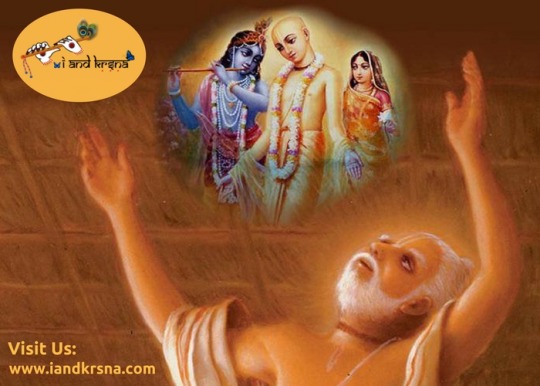
Kṛṣṇa’s yuga-avataras are four based on the four yugas i.e. Satya-yuga, Treta-yuga, Dvapara-yugaand the Kali-yuga. In each millennium the Supreme Lord incarnates, and each incarnation has a different color according to the yuga. In the Satya-yuga, the incarnation of God is white, in the Treta-yuga He is red, in the Dvapara-yuga and the Kali-yuga He is blackish. However, in special Kali-yuga, His colour is yellowish (as in the case of Caitanya Mahaprabhu).
Kṛṣṇa’s saktyavesa-avataras include 1) Kapila, 2) Rsabha, 3) Ananta, 4)Brahma (sometimes the Lord Himself becomes Brahma), 5) Catuhsana (the incarnation of knowledge), 6) Narada (the incarnation of devotional service), 7) King Prthu (the incarnation of administrative power), and 8) Parasurama (the incarnation who subdues evil principles). There is no limit to the saktyavesa-avataras and that they cannot be counted. The saktyavesa incarnations are of two kinds – direct and indirect. When the Lord Himself comes, He is called saksat, or a direct saktyavesa-avatara, and when He empowers some living entity to represent Him that living entity is called an indirect or avesa incarnation. Examples of indirect avataras are the four kumaras, Narada, Prthu and Parasurama. Examples of direct or saksad-avataras are the Sesa incarnation and the Ananta incarnation. In Ananta the power for sustaining all planets is invested, and in the Sesa incarnation the power for serving the Supreme Lord is invested.
1 note
·
View note
Photo

#LordKrishna
#Krishna
#Krsna
(via GIPHY)
0 notes
Photo
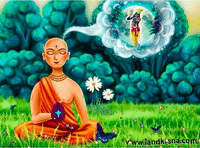
Krsna consciousness is different than Buddhist and Mayavadi philosophy. Kṛṣṇa consciousness brings you to real life – a life of devotional activity in the liberated stage. But it is often difficult to understand the philosophy of Kṛṣṇa consciousness.
0 notes
Photo

(via GIPHY)
0 notes
Photo

Krishna has a many of names, such as Govinda, Gopala, Giridhari, Nandlala, Damodara to name a few. These names are found in light of his distinctive hobbies and activities. The Krsna grew up as a cowherd and he conveyed happiness to all who lived in Vrindavan.
(via GIPHY)
0 notes

